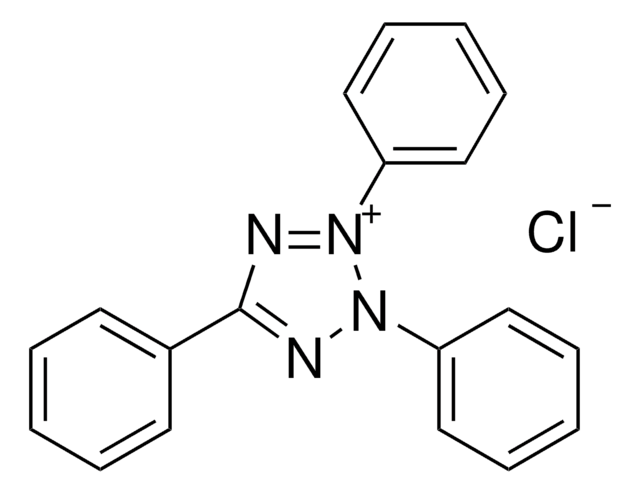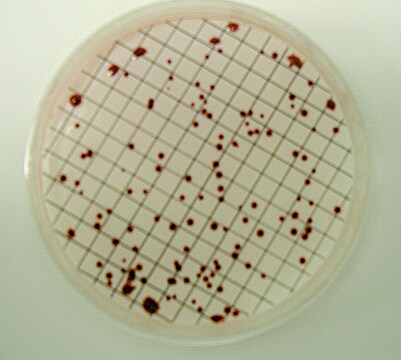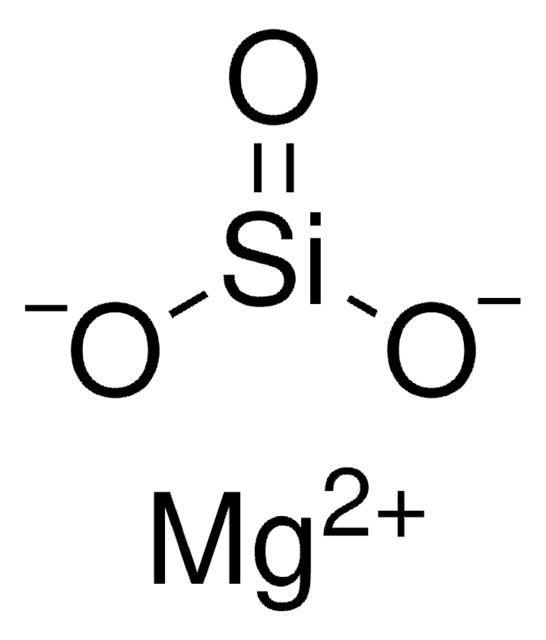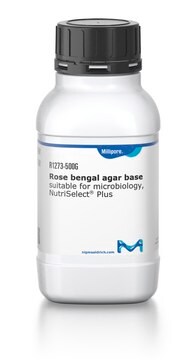17779
2,3,5-Triphenyl-tetrazolium chloride solution
suitable for microbiology, Filter sterilized solution that is recommended for the detection of microbial growth based on reduction of TTC
동의어(들):
TTC solution, TTC supplement, TTC solution, TTC supplement
로그인조직 및 계약 가격 보기
모든 사진(1)
About This Item
실험식(Hill 표기법):
C19H15ClN4
CAS Number:
Molecular Weight:
334.80
Beilstein:
3923356
MDL number:
UNSPSC 코드:
41171614
PubChem Substance ID:
NACRES:
NA.85
추천 제품
Quality Level
무균
sterile (Filtered and Aseptic Handled)
형태
liquid
유통기한
limited shelf life, expiry date on the label
분자량
334.8 g/mol
응용 분야
agriculture
environmental
food and beverages
microbiology
저장 온도
2-8°C
적합성
bacteria
SMILES string
[Cl-].c1ccc(cc1)-c2nn(-c3ccccc3)[n+](n2)-c4ccccc4
InChI
1S/C19H15N4.ClH/c1-4-10-16(11-5-1)19-20-22(17-12-6-2-7-13-17)23(21-19)18-14-8-3-9-15-18;/h1-15H;1H/q+1;/p-1
InChI key
PKDBCJSWQUOKDO-UHFFFAOYSA-M
일반 설명
2,3,5-Triphenyl-tetrazolium chloride (TTC) is a dye largely used for the easy enumeration of microbial colonies in solid culture media. This dye is colorless in the oxidized form and changes to red when reduced by microorganisms, due to the formation of formazan. Live microorganisms, for example, E. coli and other coliforms reduce TTC by enzymatic action, forming red color formazan that is kept inside granules in the cells. TTC is highly recommended in testing pasteurized milk because there is a high percentage of microorganisms unable to reduce TTC in pasteurized milk, which cannot be detected by laboratory procedures. Higher concentrations of TTC may have an inhibitory effect on the growth of Gram-positive organisms.
애플리케이션
2,3,5-Triphenyl-tetrazolium chloride (TTC) solution is a redox indicator that can help indicate cellular respiration and identify viable and non-viable cells as well as identify microorganisms capable of reduction of TTC on solid culture media
성분
(per vial)
2,3,5-Triphenyl tetrazolium chloride: 0.1 g, distilled water: 10 ml
2,3,5-Triphenyl tetrazolium chloride: 0.1 g, distilled water: 10 ml
Storage Class Code
10 - Combustible liquids
WGK
WGK 2
Flash Point (°F)
Not applicable
Flash Point (°C)
Not applicable
개인 보호 장비
Eyeshields, Gloves
Peipei Xu et al.
Frontiers in plant science, 10, 67-67 (2019-02-26)
Abscisic acid (ABA) has been implicated in plant adaptation to various environmental stresses in addition to the regulation of seed dormancy and leaf senescence. ABI3 is a B3 domain-containing family protein and functions in the ABA signaling pathway during seed
Han-Dong Li et al.
Journal of neuroinflammation, 14(1), 151-151 (2017-07-30)
Cerebral ischemia is a leading cause of death and disability with limited treatment options. Although inflammatory and immune responses participate in ischemic brain injury, the molecular regulators of neuroinflammation after ischemia remain to be defined. Translocator protein 18 kDa (TSPO) mainly
Keiichi Hishikari et al.
Cardiovascular research, 81(1), 123-132 (2008-09-23)
Increased expression of several subtypes of prostaglandin E(2) receptors (EP1-4) has recently been described in clinical and experimental myocardial ischaemia/reperfusion (I/R) injury. However, their pathophysiological significance in I/R remains obscure. Thus, we determined whether the activation of the prostanoid receptor
Itziar Perez-Terol et al.
Scientific reports, 9(1), 20017-20017 (2019-12-29)
Delayed enhancement cardiovascular magnetic resonance (MR) is the gold-standard for non-invasive assessment after myocardial infarction (MI). MR microscopy (MRM) provides a level of detail comparable to the macro objective of light microscopy. We used MRM and correlative histopathology to identify
Neel R Sodha et al.
European journal of cardio-thoracic surgery : official journal of the European Association for Cardio-thoracic Surgery, 33(5), 906-913 (2008-03-04)
Ischemia-reperfusion (I/R) injury, often encountered clinically, results in myocardial apoptosis and necrosis. Hydrogen sulfide (H(2)S) is produced endogenously in response to ischemia and thought to be cardioprotective, although its mechanism of action is not fully known. This study investigates cardioprotection
문서
Vibrio Detection
자사의 과학자팀은 생명 과학, 재료 과학, 화학 합성, 크로마토그래피, 분석 및 기타 많은 영역을 포함한 모든 과학 분야에 경험이 있습니다..
고객지원팀으로 연락바랍니다.






